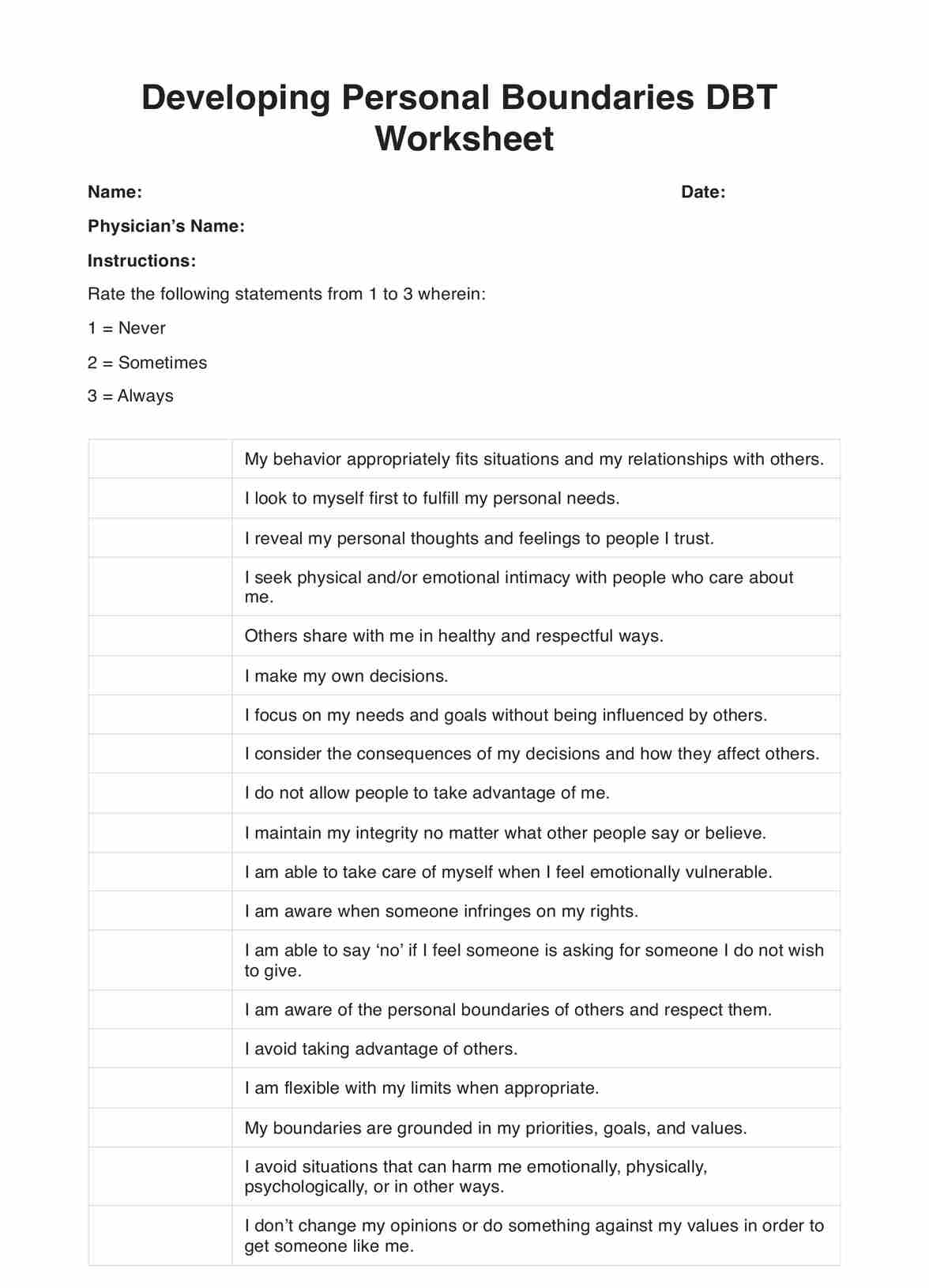It can take a client at least 30 minutes to accomplish the “Developing Personal Boundaries DBT Worksheet.”

Developing Personal Boundaries DBT Worksheets
Give your client a Developing Personal Boundaries DBT Worksheet to make them aware of and teach them how to set healthy personal boundaries.
Use Template
Developing Personal Boundaries DBT Worksheets Template
Commonly asked questions
It can help a person realize whether or not they’ve established clear, healthy personal boundaries, what their challenges are in doing so, and how to slowly learn how to do so.
Clients who struggle with forming or maintaining relationships without feeling drained or harming others may use and benefit from the Developing Personal Boundaries DBT Worksheet.
EHR and practice management software
Get started for free
*No credit card required
Free
$0/usd
Unlimited clients
Telehealth
1GB of storage
Client portal text
Automated billing and online payments











